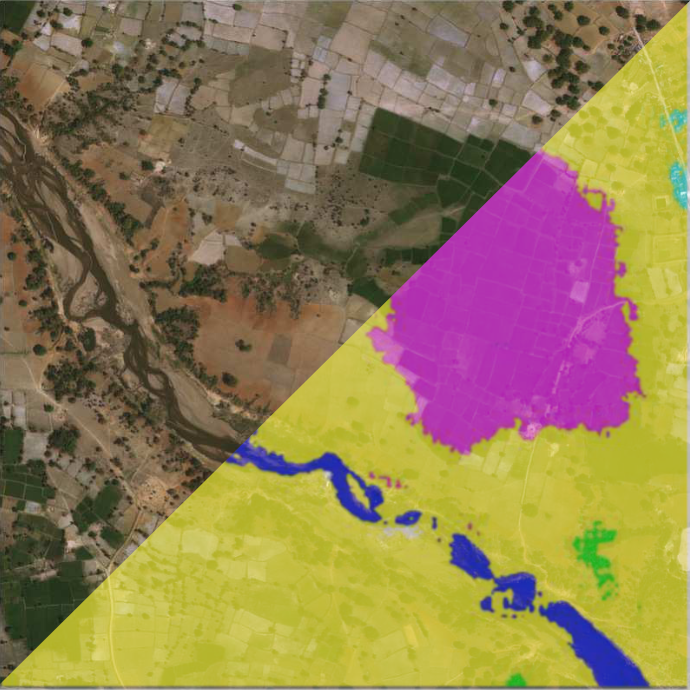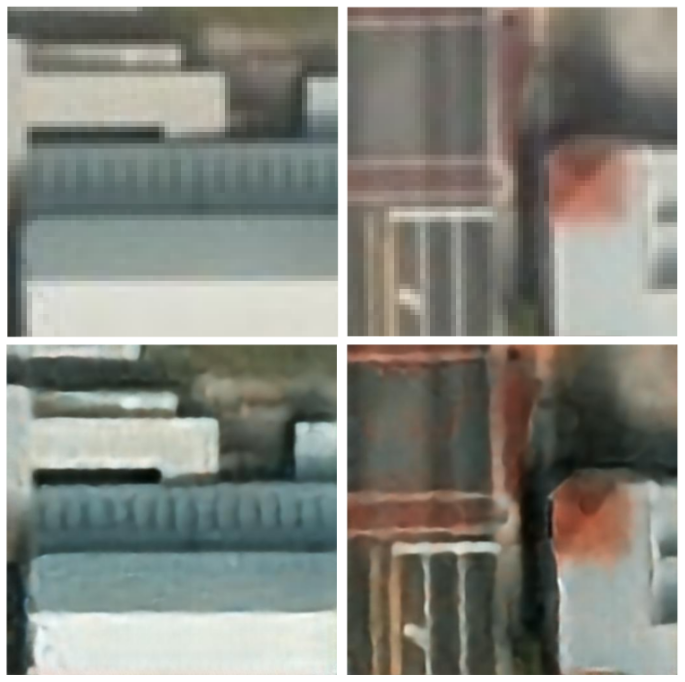
Max Ehrlich
I am a Research Scientist at NVIDIA
hardware engineering and an Adjunct Assistant Professor at the University of Maryland Computer Science
Department and UMIACS.
My current research combines machine learning and
computational
imaging to solve real problems. My focus is on breaking down and
understanding the first principles of the problem and then building
these principles back up into a machine learning solution rather than treating the model
as a black box.
In the past I have successfully applied this idea to image enhancement.
The broader
impact of this
is
to improve participation from underrepresented groups For example, by creating better
multimedia
compression algorithms which incorporate simple deep learning based techniques, people
operating in
underinvested locations (e.g., rural areas, native american reservations, 3rd world
countries) are able to participate in an increasingly media-focused internet.
I am grateful to have had recognition of the
importance of this work by many funding partners over
the years including government agencies: DARPA
and
IARPA, and private companies:
Facebook AI,
Adobe DIL,
and NVIDIA ADLR (where I currently
work).
I received my Ph.D. in Computer Science from the
University of Maryland
where
I was co-advised by Professor Larry
Davis
and
Professor Abhinav Shrivastava.
I received an M.S. in Computer Science from
Stevens
Institute of Technology. where I was advised by Professor
Philippos Mordohai and a B.S. in
Computer Science
from Rutgers University.
I am a Member of
Association for the Advancement of Artificial
Intelligence (AAAI)
Institute of Electrical and Electronics Engineers
(IEEE)
Computer Vision Foundation
(CVF)
6/25 - Our method for accelerating INR convergence using shared encoders is now avaiable as a preprint
5/25 - Our preprint on improving the Eagle model is now on arXiv
11/24 - VEMIC, our method for compressing multi-view images, was pubished in BMVC 2024
10/24 - Our paper on human mesh recovery was presented at ECCV 2024
10/24 - Our paper on INRs with latent representations was presented at ECCV 2024
5/25 - Check out our preprint on video captioning for self-driving cars
3/24 - I am co-organizing a CVPR 2024 workshop on Implicit Neural Representations for Vision,
please submit your papers!
2/24 - Our paper on explaning INRs, XINC, was
accepted to CVPR 2024.
1/24 - A preprint of our paper on explaning INRs, XINC, is
now available on arXiv.
As an Adjunct member of the faculty I do not have funding to hire students, if you are interested in working with me please reach out to Professor Abhinav Shrivastava.
Service
Conference Reviewer: AAAI, ICLR, ECCV, IJCAI, CVPR, ICML, ICCV, WACV
Journal Reviewer: Transactions on Image Processing (TIP), International Journal of Artifical Intelligence (IJAI), The Visual Computer (TVCJ), Transactions on Circuits and Systems for Video Technology (TCSVT), IEEE Access, Digital Signal Processing
Contact
Contact me by email at
mehrlich {at} nvidia {dot} com
or stop by my office: IRB 4248
-----BEGIN PGP PUBLIC KEY BLOCK-----
xjMEY0WaBxYJKwYBBAHaRw8BAQdAtvqQTAbvje5tZNvm+oPAwn5nXqFHmo9g
yqYE/b4dV9LNN3F1ZXVlY3VtYmVyQHByb3Rvbm1haWwuY29tIDxxdWV1ZWN1
bWJlckBwcm90b25tYWlsLmNvbT7CjAQQFgoAHQUCY0WaBwQLCQcIAxUICgQW
AAIBAhkBAhsDAh4BACEJECvGNJpqUJGvFiEErWWIAZf4JoLBVB79K8Y0mmpQ
ka/QAgD+KG1R6ELfNmn1MbD2slNBcBO/R/ZQEfpTTVEsnccRQFcA/j12pH2Z
Ys34JfbZL9k2r/epWw2VgsqcsPY+Gls6eWwCzjgEY0WaBxIKKwYBBAGXVQEF
AQEHQI5GnYGeCOCFL2i8ZZXeuv5fuvK7oY9Jo9EQm9K7FAM3AwEIB8J4BBgW
CAAJBQJjRZoHAhsMACEJECvGNJpqUJGvFiEErWWIAZf4JoLBVB79K8Y0mmpQ
ka/gIAD/XpQGOrfg2DMl998n/Y8Ak6FVJrOga8rHLc/Y1y8R1rcA/1TA4MbR
wY69LacJYVo91FCZyYFhqswPDOxxOZtzqYUI
=52WD
-----END PGP PUBLIC KEY BLOCK-----
Students
- Shishira R Maiya (Ph.D. Student)
- Vatsal Agarwal (Ph.D. Student)
- Namitha Padmanabhan (Ph.D. Student)
- Lillian Huang (M.S. Graduated Spring 2023, currently at Ford)
- Evan Wen (High School Mentorship, currently undergrad UCLA)
Teaching
Spring 2024 CMSC421 Intro to Artificial Intelligence
Spring 2022 CMSC422 Intro to Machine Learning
My Research
My research emphasizes broad impact and collaboration with outside agencies. Aside from these research programs, I have participated in many other published research projects, please see my full list of papers and patents below for more information.Video Compression
Video sharing is increasingly popular and quickly becoming the primary method for interaction on the internet. With the global pandemic, video conferencing has become mandatory for many people to work or attend school. This causes major problems for people who lack a broadband connection. In this ongoing paper series on video compression, I am developing ways to incorporate deep learning models which run on commodity hardware and can be used in the near term. This research is conducted in collaboration with NVIDIA.
JPEG Compression
JPEG compression is the most popular image compression algorithm and currently powers image sharing on the internet and mobile phones. In this paper series on JPEG compression, I advanced theoretical knowledge about the interaction between JPEG compression and deep learning and used these theoretical results to improve the fidelity of JPEG images both for human and machine consumption. This research was primarly funded by a three year academic grant awarded to me by Facebook (Meta) AI, allowing me to work autonomously, and led to collaborations with Facebook.

Remote Sensing
In this program, we developed novel methods for improving land cover segmentation in sattelite images. This is a challenging and important problem with wide application from national defense to planning and surveying. This research was funded by the IARPA Core3D program.
Video Compression
Video sharing is increasingly popular and quickly becoming the primary method for interaction on the internet. With the globlal pandemic, video conferencing has become mandatory for many people to work or attend school. This causes major problems for people who lack a broadband connection. In this ongoing paper series on video compression, I am developing ways to incorporate deep learning models which run on commodity hardware and can be used in the near term. This research is conducted in collaboration with NVIDIA.

JPEG Compression
JPEG compression is the most popular image compression algorithm and currently powers image sharing on the internet and mobile phones. In this paper series on JPEG compression, I advanced theoretical knowledge about the interaction between JPEG compression and deep learning and used these theoretical results to improve the fidelity of JPEG images both for human and machine consumption. This research was primarly funded by a three year academic grant awarded to me by Facebook (Meta) AI, allowing me to work autonomously, and led to collaborations with Facebook.
- Prior works train an ensemble of models, one for each JPEG quality. We use a single network parameterized by the JPEG quantization matrix.
- Prior works deal with grayscale images only, with the assumption that their models can be applied channel-wise. We show that single-channel networks have trouble generalizing and design a network for color correction.
- Prior works focus on CNN regression which causes blurry and textureless results. We introduce a novel GAN loss that includes an explicit texture restoring term, this yields a more realistic result.
Remote Sensing
In this program, we developed novel methods for improving land cover segmentation in sattelite images. This is a challenging and important problem with wide application from national defense to planning and surveying. This research was funded by the IARPA Core3D program.


Full List of Papers and Patents
2025
Vikram Rangarajan, Shishira Maiya, Max Ehrlich, Abhinav Shrivastava
arXiv Preprint
arXiv Cite It!
Guo Chen, Zhiqi Li, Shihao Wang, Jindong Jiang, Yicheng Liu, Lidong Lu, De-An Huang, Wonmin Byeon, Matthieu Le, Tuomas Rintamaki, Tyler Poon, Max Ehrlich, et al.
arXiv Preprint
arXiv Cite It!
Vatsal Agarwal, Mara Levy, Max Ehrlich, Youbao Tang, Ning Zhang, Abhinav Shrivastava
In ECCV
Springer Cite It!
2024
Susmija Jabbireddy, Davit Soselia, Max Ehrlich, Christopher Metzler, Amitabh Varshney
In BMVC
BMVC Cite It!
Shishira R Maiya, Anubhav Gupta, Matthew Gwilliam, Max Ehrlich, Abhinav Shrivastava
In ECCV
arXiv Cite It!
Mohamed R. Amer, Timothy J. Shields, Amir Tamrakar, Max Ehrlich, Timur Almaev
US Patent 12,073,305
Google Cite It!
Boyi Li, Ligeng Zhu, Ran Tian, Shuhan Tan, Yuxiao Chen, Yao Lu, Yin Cui, Sushant Veer, Max Ehrlich et al.
arXiv Preprint
arXiv Cite It!
Namitha Padmanabhan, Matthew Gwilliam, Pulkit Kumar, Shishira R Maiya, Max Ehrlich, Abhinav Shrivastava
In CVPR
arXiv Cite It!
Max Ehrlich, Jon Barker, Namitha Padmanabhan, Larry S. Davis, Andrew Tao, Bryan Catanzaro, Abhinav Shrivastava
In WACV
arXiv Cite It!
2023
Shishira R. Maiya, Max Ehrlich, Vatsal Agarwal, Ser-Nam Lim, Tom Goldstein, Abhinav Shrivastava
In BMVC
arXiv Cite It!
Shishira R Maiya*, Sharath Girish*, Max Ehrlich, Hanyu Wang, Kwot Sin Lee, Patrick Poirson, Pengxiang Wu, Chen Wang, Abhinav Shrivastava
In CVPR
arXiv Cite It!
2022
Evan Wen, Rebecca Sorenson, Max Ehrlich
In ECCV Medical Computer Vision Workshop
arXiv Cite It!
Max Ehrlich
Doctoral Dissertation, University of Maryland College Park
arXiv Cite It!
2021
Max Ehrlich, Larry Davis, Ser-Nam Lim, Abhinav Shrivastava
In ICCV MELEX Workshop
arXiv CVF Cite It!
2020
Max Ehrlich, Larry Davis, Ser-Nam Lim, Abhinav Shrivastava
In ECCV
arXiv ECVA Cite It!
2019
Arthita Ghosh, Max Ehrlich, Larry Davis, Rama Chellappa
In IGARS
arXiv IEEE Cite It!
Max Ehrlich and Larry S. Davis
In ICCV
arXiv CVF Cite It!
2018
Arthita Ghosh, Max Ehrlich, Sohil Shah, Larry Davis, Rama Chellappa
In CVPR Workshops
CVF Cite It!
2017
Timothy J. Shields, Mohamed R. Amer, Max Ehrlich, Amir Tamrakar
In CVPR Workshops
CVF Cite It!
2016
Max Ehrlich and Philippos Mordohai
In 3DUI
IEEE Direct Cite It!
Max Ehrlich, Timothy J. Shields, Timur Almaev, Mohamed R. Amer
In CVPR Workshops
CVF Cite It!
2015
Max Ehrlich
Master's Thesis, Stevens Institute of Technology
Direct